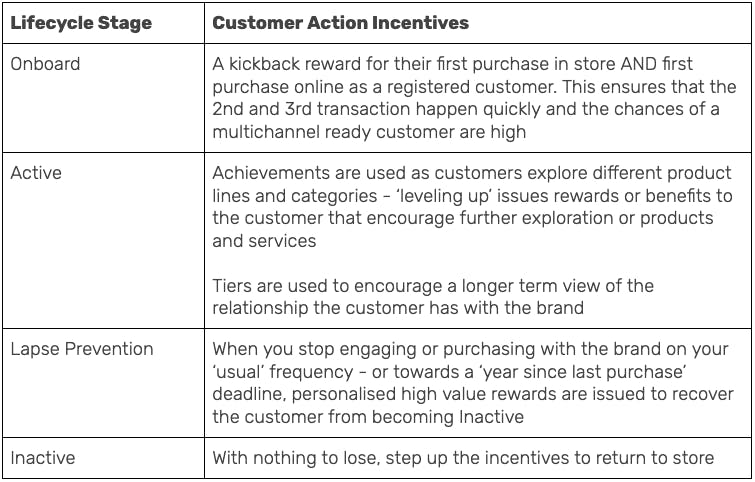For many brands, the idea of building customer loyalty, retention, engagement and advocacy with an incentive program is an exciting prospect, but designing and delivering an effective plan can be a real challenge. Well, we’re here to change that.
The most effective approach to implementing incentives programs is to assess it against the customer lifecycle model.

As customers spend time with your brand, they change and mature - this can be broken down into the four broad stages for incentive opportunities:
These programs, like any relationship, are long-term investments that require monitoring, optimisation and innovation in order to stay relevant. When executed correctly, they do more than just retain customers - they create advocates and establish new relationships. As customers mature with the brand, they become more valuable to the growth of the business, and your incentive programs should be designed to recognise this.
Think of it this way - you wouldn't ask somebody to marry you after a first date - the same goes for your relationship with customers; as it progresses, actions and incentives should reflect how much you know about one another.
By utilising the customer lifecycle framework, you can address customers changing needs, meet personalisation expectations and deliver incentives most relevant to an individual - rather than using the 'spray and pray' approach of traditional marketing.
Traditional incentive programs have rewarded all users regardless of their position in the lifecycle, typically only for making a purchase. Or they may introduce a one-dimensional tier framework that links all incentives to spend, regardless of how long the customer has been connected to the brand.
Understanding individual evolutions means that there are more effective actions that can be taken to build brand loyalty.
For example, your best brand advocates are those who are knowledgeable about the brand from interaction over time. Offering those customers a reward to make a referral is more productive than providing it to customers who have just come across your brand.

In the example above, we see that instead of just hoping a customer takes action, value adds are leveraged to specifically encourage customer actions at particular lifecycle stages, increasing the likelihood of positive experiences, engagement and advocacy.
With specific program objectives and an understanding of customer journeys, businesses can successfully build Incentive Programs in a way that will help customers develop into loyal brand advocates.
Tess O’Brien